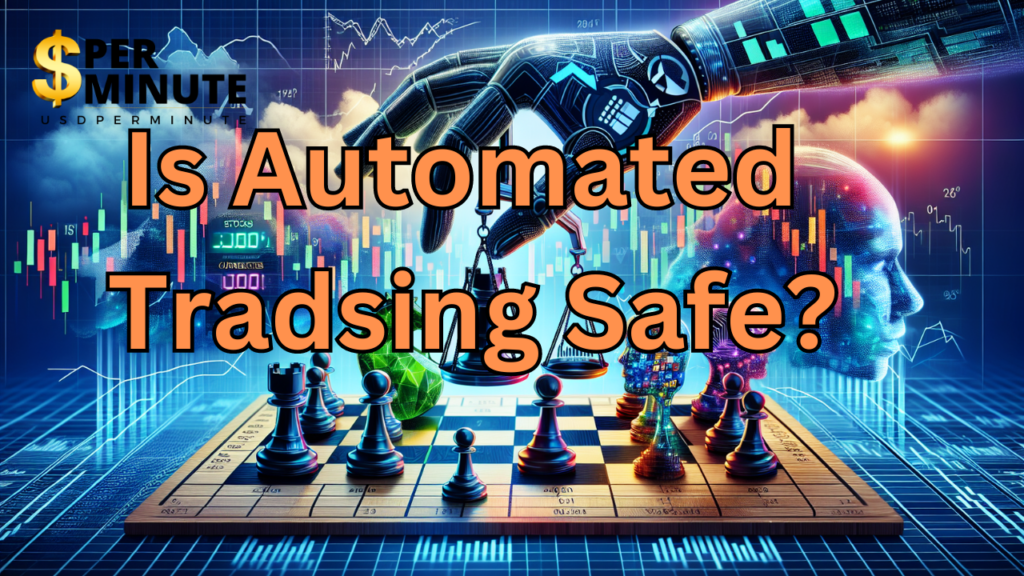Is Automated Tradsing Safe?

Automated trading, also known as algorithmic trading, involves the use of computer programs to execute trades based on predefined criteria. It has gained popularity among traders due to its speed, efficiency, and ability to operate without human intervention. However, the question of whether automated trading is safe remains a topic of debate. This article will explore the benefits, risks, and safety considerations associated with automated trading.
Benefits of Automated Trading
- Speed and Efficiency: Automated trading systems can process large volumes of data and execute trades at lightning speed, much faster than any human trader. This speed can be advantageous in fast-moving markets where seconds can make a difference.
- Elimination of Emotions: Emotions like fear and greed can lead to poor decision-making in trading. Automated systems follow a set of predefined rules, removing emotional bias from the trading process.
- Backtesting Capabilities: Automated trading systems allow traders to backtest their strategies against historical data, enabling them to refine and optimize their approach before risking real money.
- Consistency: Automated trading ensures that strategies are executed consistently, without the variability that can occur with manual trading. This consistency can lead to more disciplined and potentially more profitable trading.
- 24/7 Trading: Automated systems can operate around the clock, taking advantage of trading opportunities in global markets that are open 24 hours a day.
Risks of Automated Trading
- Technical Failures: Automated trading relies on technology, and technical failures such as connectivity issues, software bugs, or server crashes can lead to significant losses. Even the most well-designed system is not immune to such risks.
- Over-Optimization: Backtesting can lead to over-optimization, where a strategy is too finely tuned to past data, resulting in poor performance in real-time trading. This phenomenon, known as curve-fitting, can create a false sense of security.
- Market Volatility: Automated systems may struggle in highly volatile markets where sudden price movements can lead to unexpected losses. Some algorithms may not be equipped to handle extreme market conditions, leading to substantial risks.
- Lack of Human Judgment: While removing emotions can be beneficial, automated systems lack the human judgment needed to adapt to unforeseen circumstances. They may blindly follow rules without considering new information or changes in market dynamics.
- Regulatory and Ethical Concerns: The use of high-frequency trading and other automated strategies has raised concerns about market fairness and stability. Some argue that automated trading can lead to market manipulation or contribute to flash crashes, where markets experience sudden and severe price drops.
Safety Considerations for Automated Trading
- Regular Monitoring: Automated systems require regular monitoring to ensure they are functioning correctly and to make adjustments as needed. Traders should not rely solely on the system without oversight.
- Robust Risk Management: Implementing robust risk management techniques, such as stop-loss orders and position sizing, is essential in automated trading. These measures can help limit potential losses.
- Diverse Strategies: Relying on a single automated strategy can be risky. Diversifying across multiple strategies and asset classes can help spread risk and reduce the impact of any one strategy failing.
- Testing and Validation: Thoroughly testing and validating automated systems under various market conditions is crucial. This includes stress testing to see how the system performs during extreme market events.
- Stay Informed: Even with automated trading, traders must stay informed about market conditions, economic events, and technological advancements. Staying educated and informed allows traders to make better decisions about when to intervene or adjust their systems.
Conclusion
Automated trading offers numerous advantages, including speed, efficiency, and the elimination of emotional bias. However, it is not without risks, including technical failures, over-optimization, and lack of human judgment. To ensure safety in automated trading, traders must implement robust risk management practices, regularly monitor their systems, and stay informed about market conditions.
While automated trading can be a powerful tool, it requires careful consideration and ongoing oversight. By understanding both the benefits and risks, traders can make informed decisions about whether automated trading is the right choice for their investment strategy.